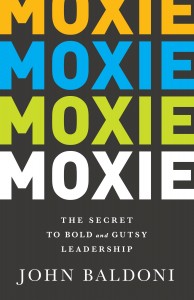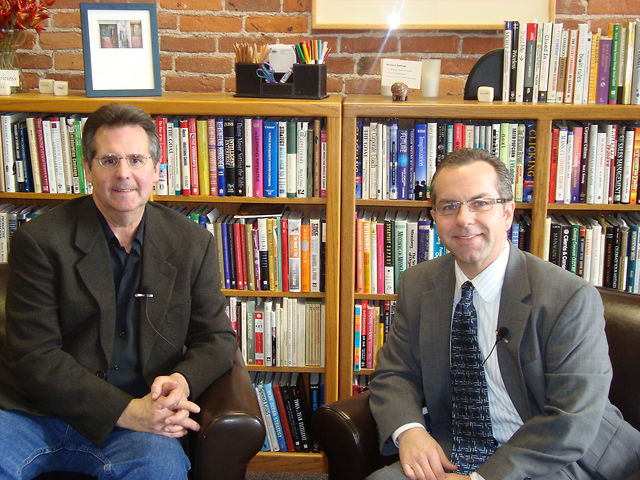Decide to Lead
Attending a conference recently, I had the opportunity to see leadership in action. We were sitting in a small, windowless room after a long day of listening to speeches. I was asked to attend this meeting mostly as an observer. The first person to talk immediately began explaining a problem. It wasn’t a few minutes into her explanation when heads were nodding. Apparently, the problem had been discussed time and time again.
But no one did anything about it.
Finally, a woman stood up and said, “I was at the last meeting and we are no farther to a solution now than we were then. We have to do something. Here’s what we are going to do…”
What she proposed was bold and somewhat controversial, but the atmosphere changed instantaneously.
Why? Someone decided to lead. Objections were raised, but she was determined. You could hear the determination in her voice. Her eyes were intense as she proceeded to outline the plan. She was prepared, ready.
She had the guts to lead. She was demonstrating, as you will see, M.O.X.I.E. Moxie is a leadership formula, a set of characteristics, that distinguish leaders from others. It makes a leader, like that gutsy woman, start to make things happen.
Lead With MOXIE
My friend John Baldoni is a leadership expert who has recently written about moxie in his latest book, MOXIE: The Secret to Bold and Gusty Leadership. You may recognize him as the author of numerous books such as Lead With Purpose, Lead Your Boss, How Great Leaders Get Great Results and Lead By Example. He has also authored thousands of articles in publications ranging from the Wall Street Journal, Inc.com, Fast Company, Forbes, to Harvard Business Review. I recently caught up with John to talk about his latest book.
What is moxie and how is it important to leaders?
Moxie in its purest form is the guts and gumption and determination leaders apply to achieve their goals. Implied in that definition is the ability to meet and overcome adversity. Few leaders achieve much without facing up to hardship. Resilience is inherent to moxie. There is no shame in getting knocked down; it’s what you do next that matters.

And please know I borrowed the word from the movies. Think of characters who overcome the odds. We say they have “moxie.”
M.O.X.I.E. is an acronym that really is a blueprint for effective leadership. Let’s briefly touch on each letter:
Mindfulness. How does a leader become more mindful about her self and her team?
Practice Self and Situation Awareness
Mindfulness, as I define it, is a combination of self-awareness as well as situation awareness. You develop self-awareness through practice of self-reflection. You strengthen it by asking for feedback from trusted colleagues. Situation awareness comes from knowing the score, that is, what’s happening and what’s not happening. Leaders need to know how their team and organization is doing and they gain that perspective by asking questions, observing, listening, and evaluating what they learn.
See Opportunity All Around You
Opportunity. Opportunistic leaders look for ways to improve everything. Is this a mindset that can be taught? How do you coach someone to be more opportunistic?
Leaders are those who see opportunity where others see obstacles. Leaders view challenges as occasions to address problems and find solutions. True enough some of us are more disposed to opportunity than others, but it can be learned by watching how leaders navigate challenges and turn them into opportunities.
History is shaped by such mindsets. As I write in MOXIE, Nelson Mandela viewed South Africa’s hosting of the 1995 Rugby World Cup tournament as an opportunity to bring both white and black together as a unified people, at least for a sporting event Mandela developed such an opportunistic attitude during his long years in prison where he did all that he could to understand his captors, even learning their language Afrikaans. As South Africa’s first black president he led by example. He did not cave into bitterness; he exemplified reconciliation which was institutionalized and put into practice through the nation.
On a more direct level, I tell stories of individuals who have suffered a setback but found ways to turn that occasion into a learning experience from which they profited. That’s moxie.
You coach opportunity to looking to those who exemplify it, and then ask individuals what they learn from the example of opportunistic leaders.
Show the X Factor
X factor. You say that “The sum of your X factor attributes gives you the foundation to do what you do better than anyone else.” What ways can you really learn what your own X factors are?
Again self-awareness is essential. It is important to know what you are made of. As we say, character is what you do when you don’t think others are watching. It’s the essential you. People know that about themselves. What they may not realize until they are tested is how resilient and courageous they are. We know this from people who have experienced danger and survived through their wits and determination. Likewise ambition plays are role in shaping our drive for success; for leaders ambition must be channeled toward goals that enrich the team as well as the leader.
Feedback is a good way to gain insight into who you are. Additionally as an executive coach I make use of personality and leadership self-assessments. These instruments can provide guidance by revealing how we perceive ourselves.
Lead With Innovation
Innovation. Everyone wants to be more innovative. What are some of the obstacles blocking innovation in organizations?
Inertia is the biggest obstacle. People at the top may preach change but they don’t practice it so nothing different gets done. I profile Rich Sheridan, CEO of Menlo Innovations, in MOXIE. Rich is one of the most innovative souls you will ever meet. His company is built upon shared principles that distribute thinking and doing to everyone. Rich says you cannot innovate until you drive fear out of the organization. You need to make it safe for people to experiment. Failure can be an outcome. And if we’re smart we will learn from failure and channel it into our next innovation.
Engage Others
Engagement. What’s your definition of engagement? You consult with many organizations. What do you immediately notice about an engaged culture?
If people want to come to work and contribute, and collaborate with others, you haven engaged culture. People are focused and tuned into the needs of others. They realize that the firm will only succeed if they work with others. That’s engagement.
I like to say that an engaged culture is tangible. You can feel the purpose in the room. How? People are satisfied. They enjoy what they do. You see people talk, chatter and laugh together.
And here’s something I’ve noticed. Laughter can be a by-product symptom of an engaged culture. True enough in toxic cultures jokes about silly rules and self-important people can be a means of coping. But in engaged cultures laughter over shared ideas and experiences can work as a bonding experience. Such laughter is affirmative and brings people together.
Engagement is how leaders connect one to one, or one to thousand. Leaders demonstrate engagement by listening to others and learning from them. They also demonstrate engagement through their words and actions. They express a point of view and set direction, and then follow through. Leaders set the example and hold themselves accountable.
John, you’ve written many books on leadership. I’ve interviewed you twice about your work both in person and in writing. When did you first become passionate about the subject of leadership?
Good question. Growing up I know I didn’t use the concept though I know I had good examples of it chiefly from my parents. My father was a small-town doctor who was passionate about the art of medicine and diligent about the science of it. My mother was a “stay-at-home mom” but when we kids grew up Mother got her masters and then got involved in local politics first as a city councilperson and later as mayor. My parents instilled in me the value of service to others which they practiced diligently.
I am also a product of eight years of Jesuit education – high school and university. From the Jebs I learned to think as well as how to make a positive difference. Both are fundamental to leadership. And when I began to write about leadership it was the lessons my parents and my teachers instilled in me that bubbled to the surface.
MOXIE: The Secret to Bold and Gusty Leadership


